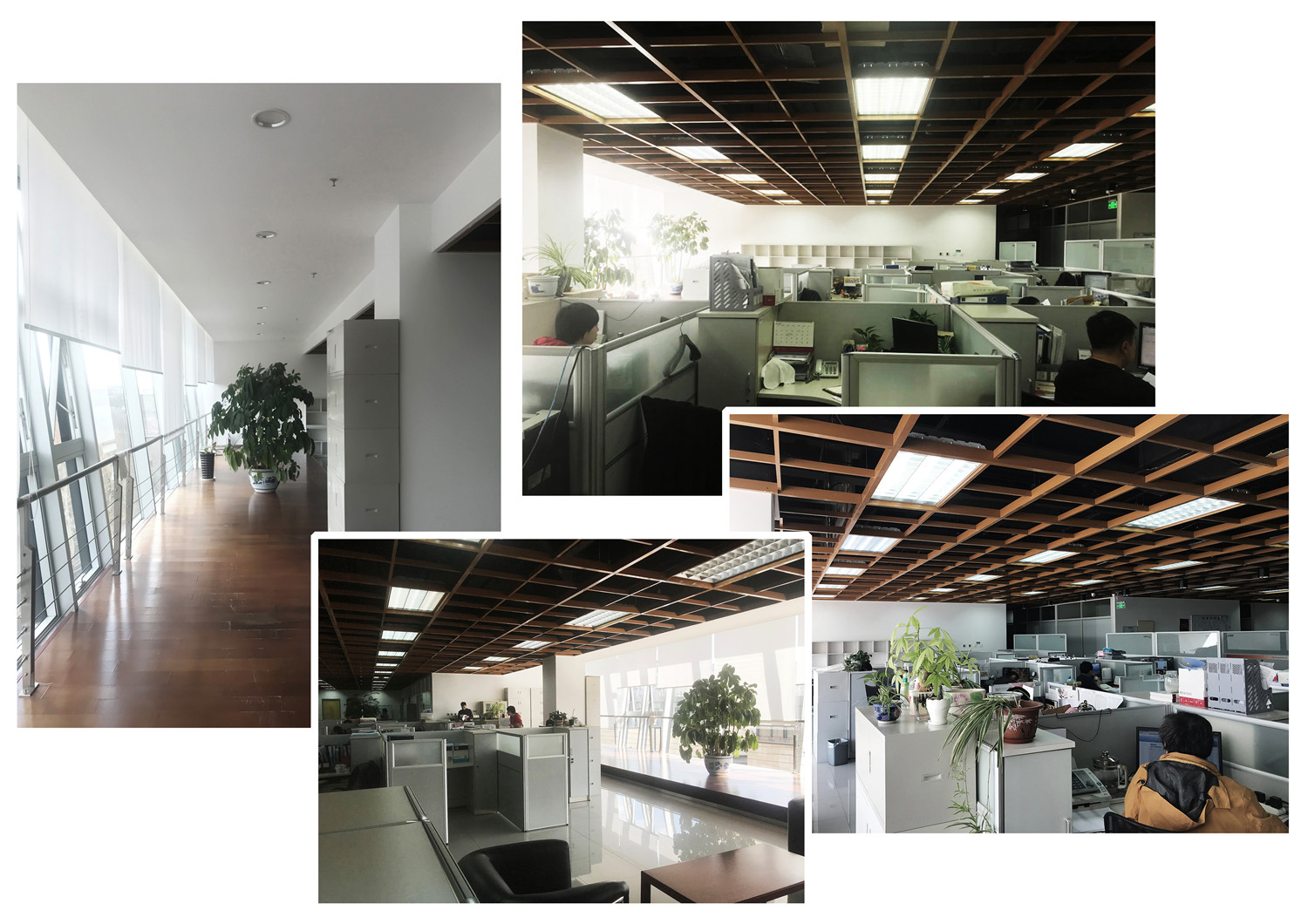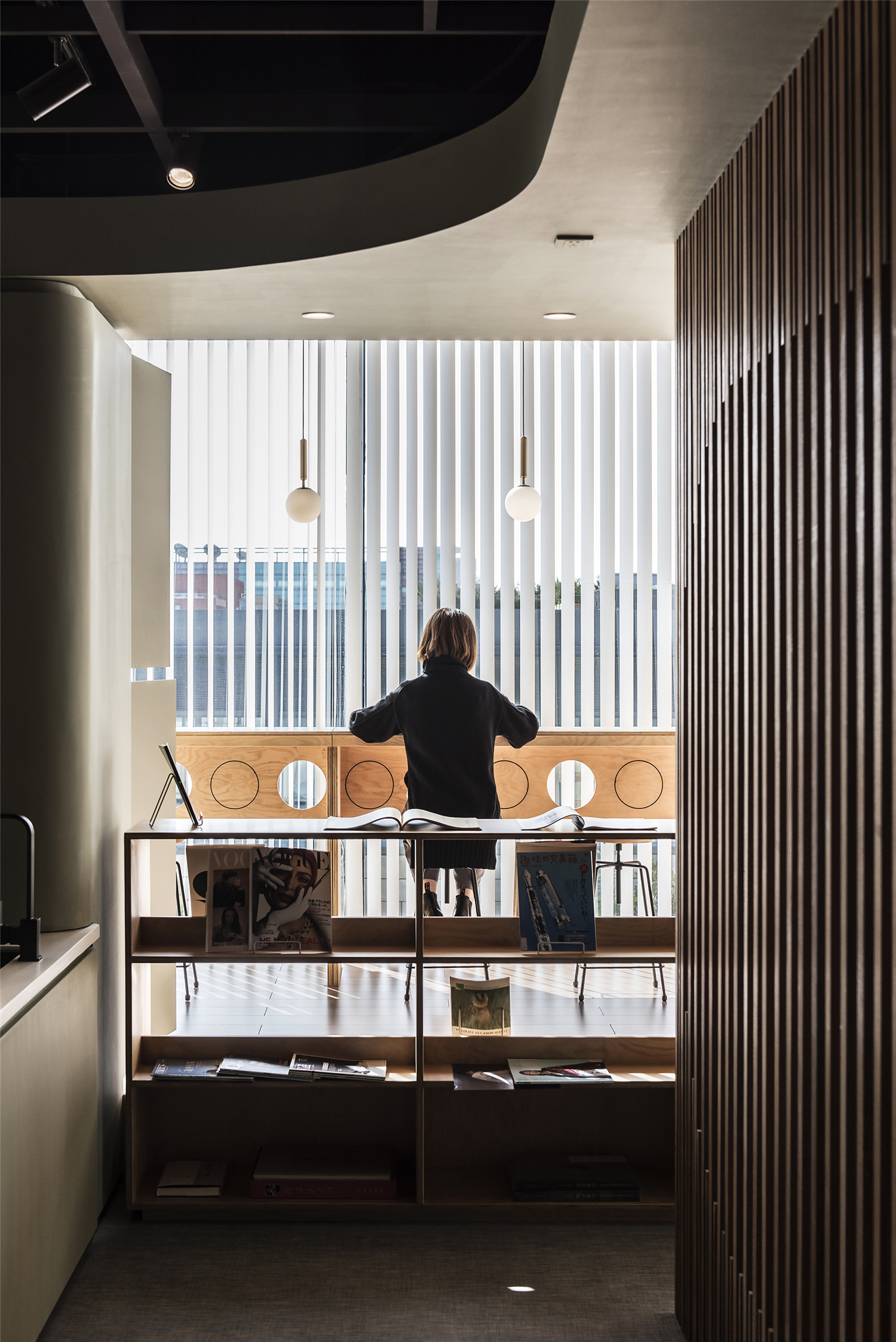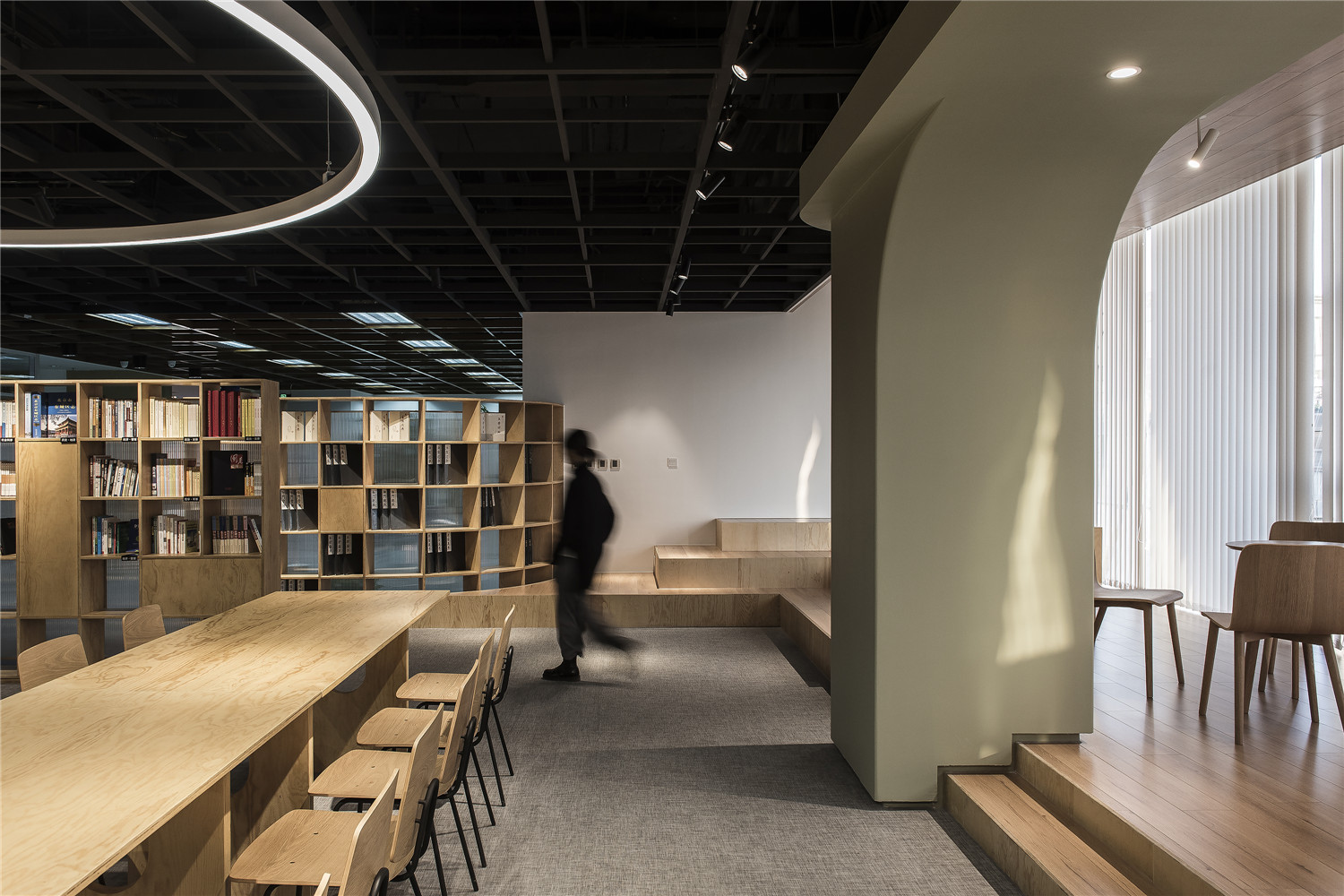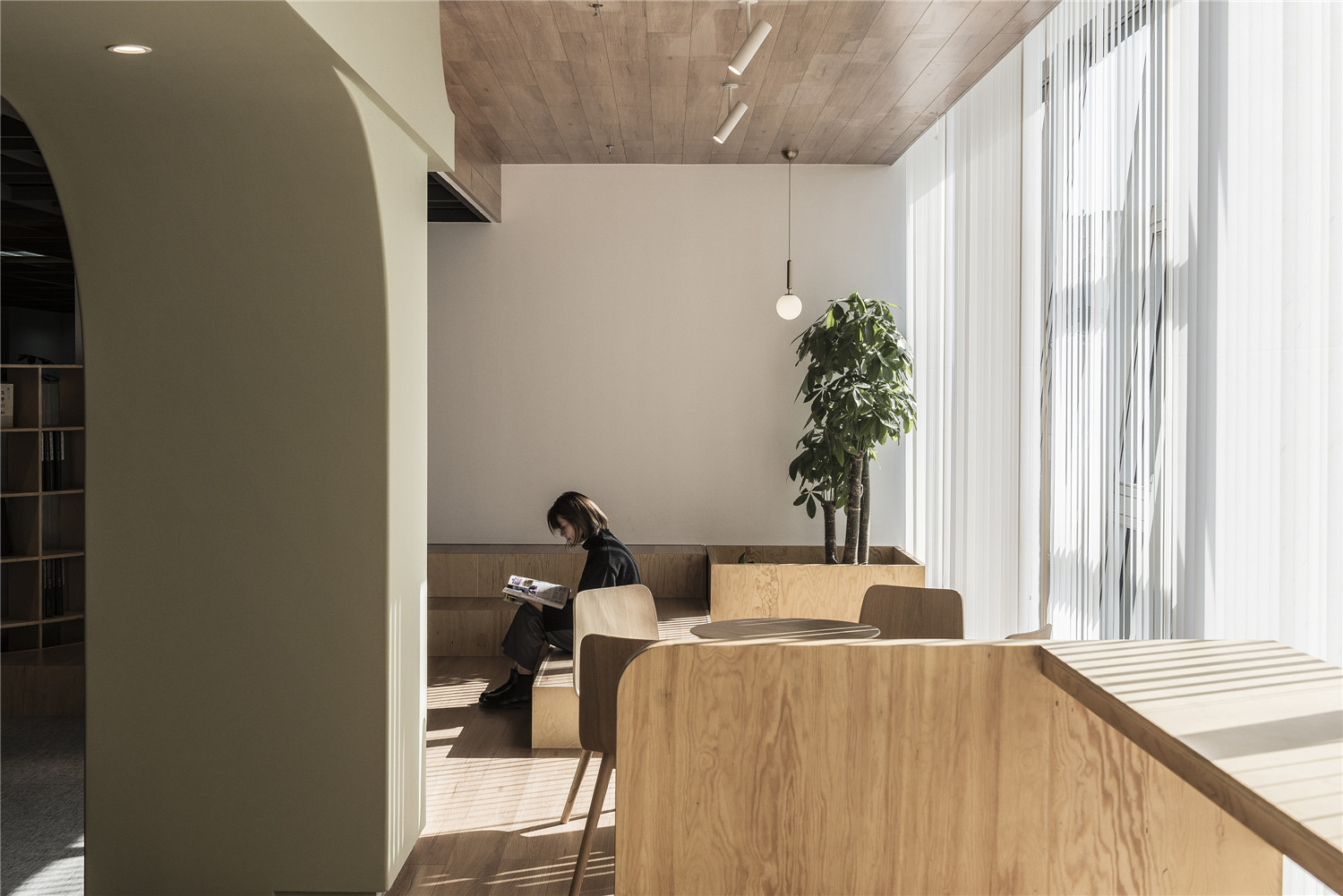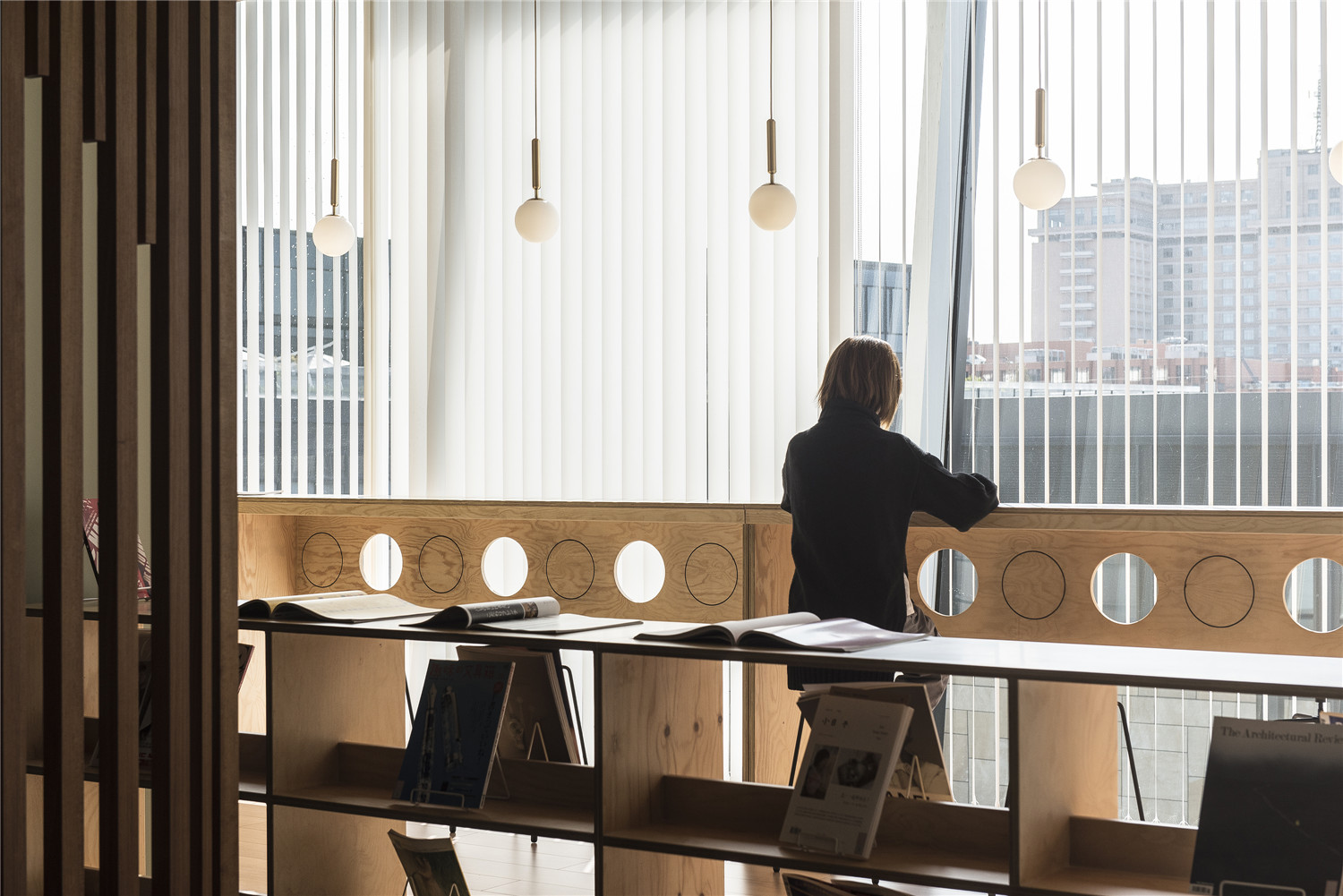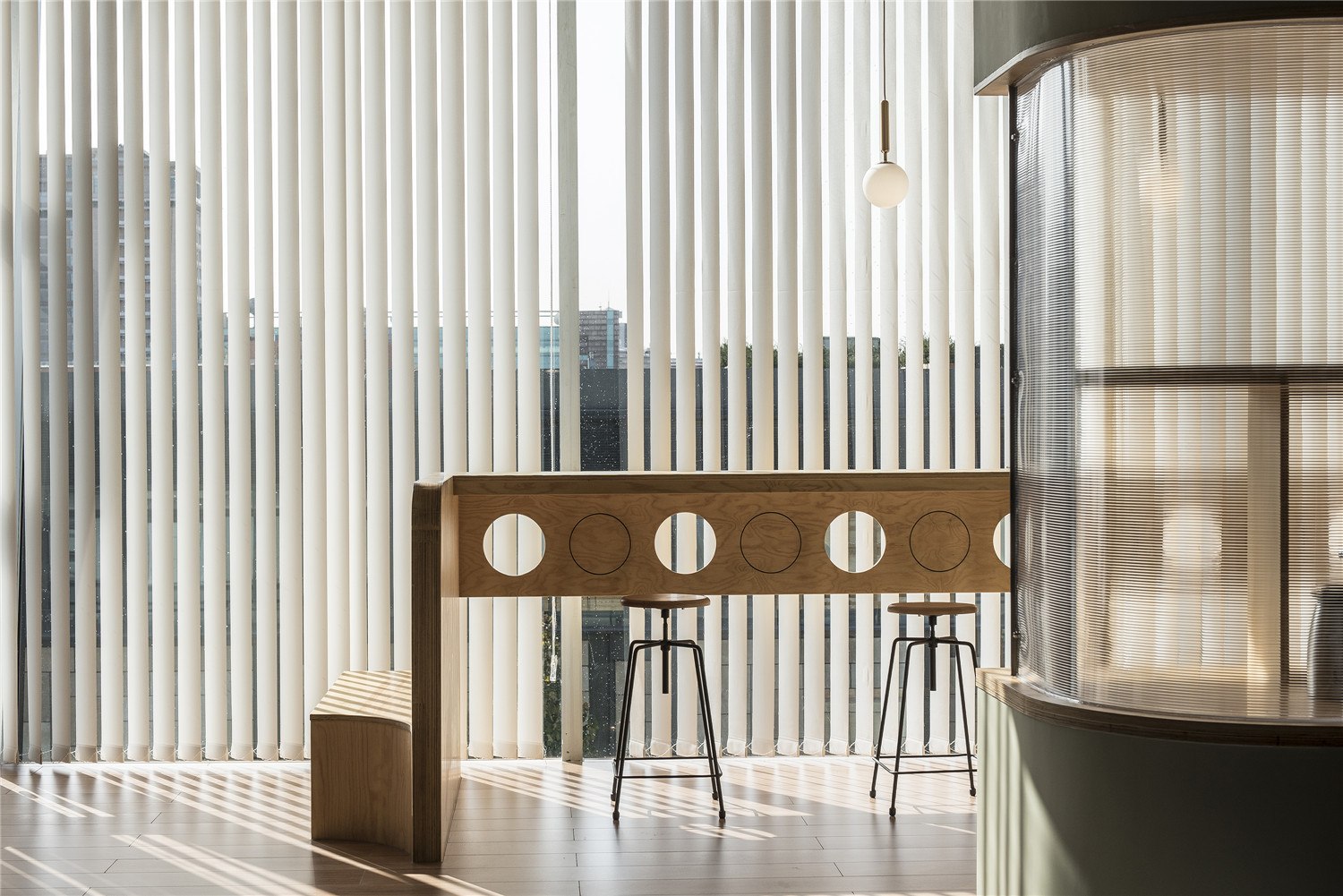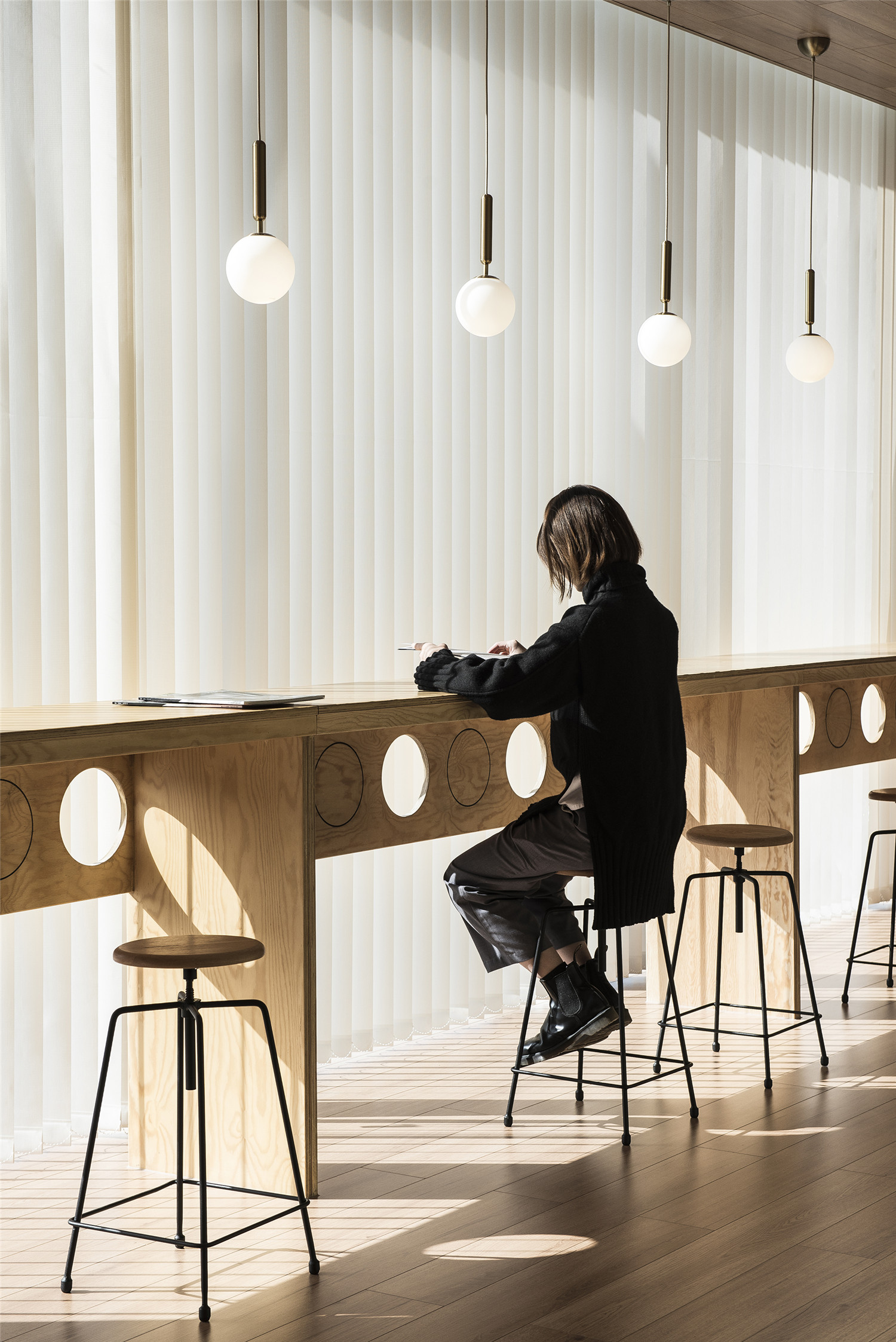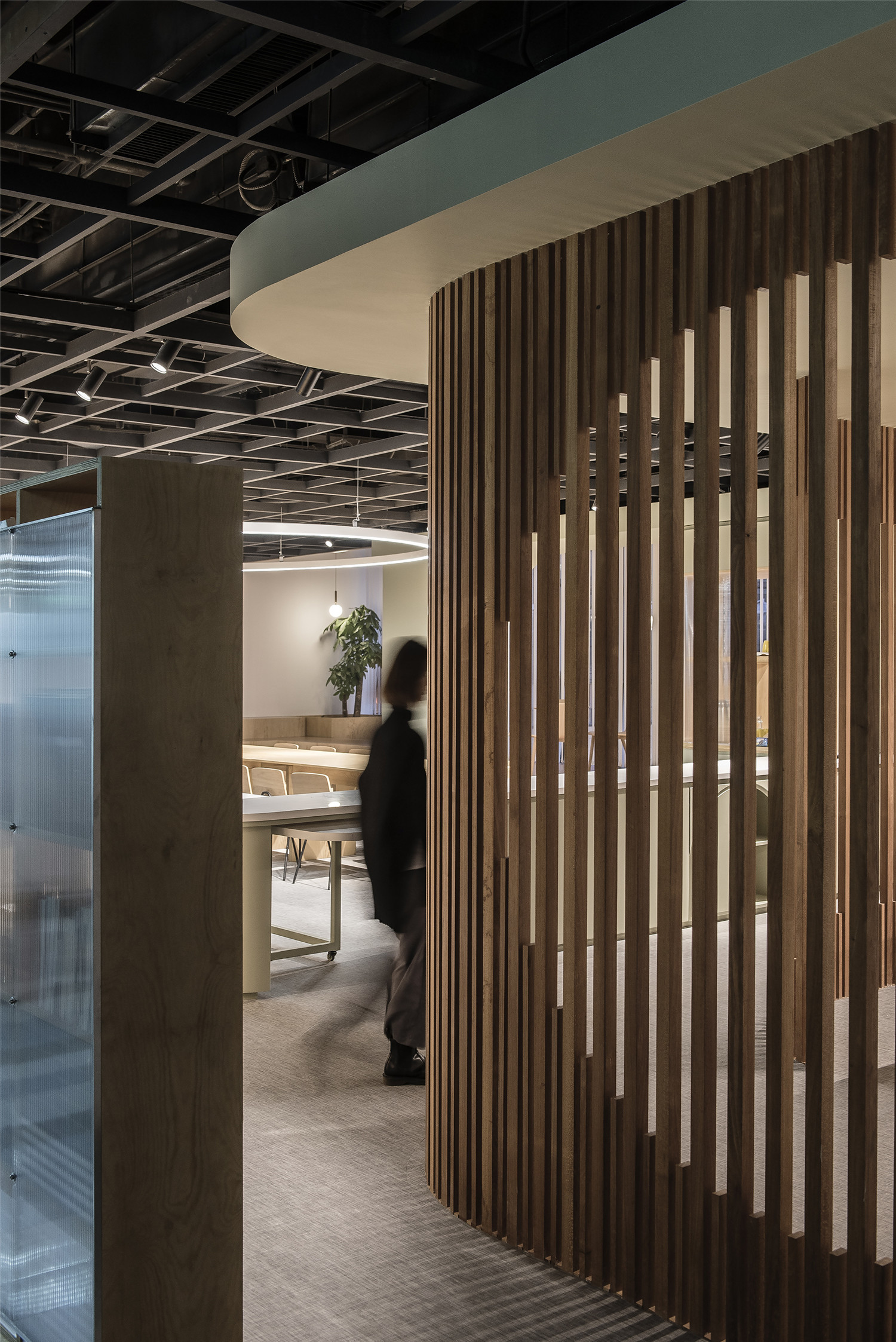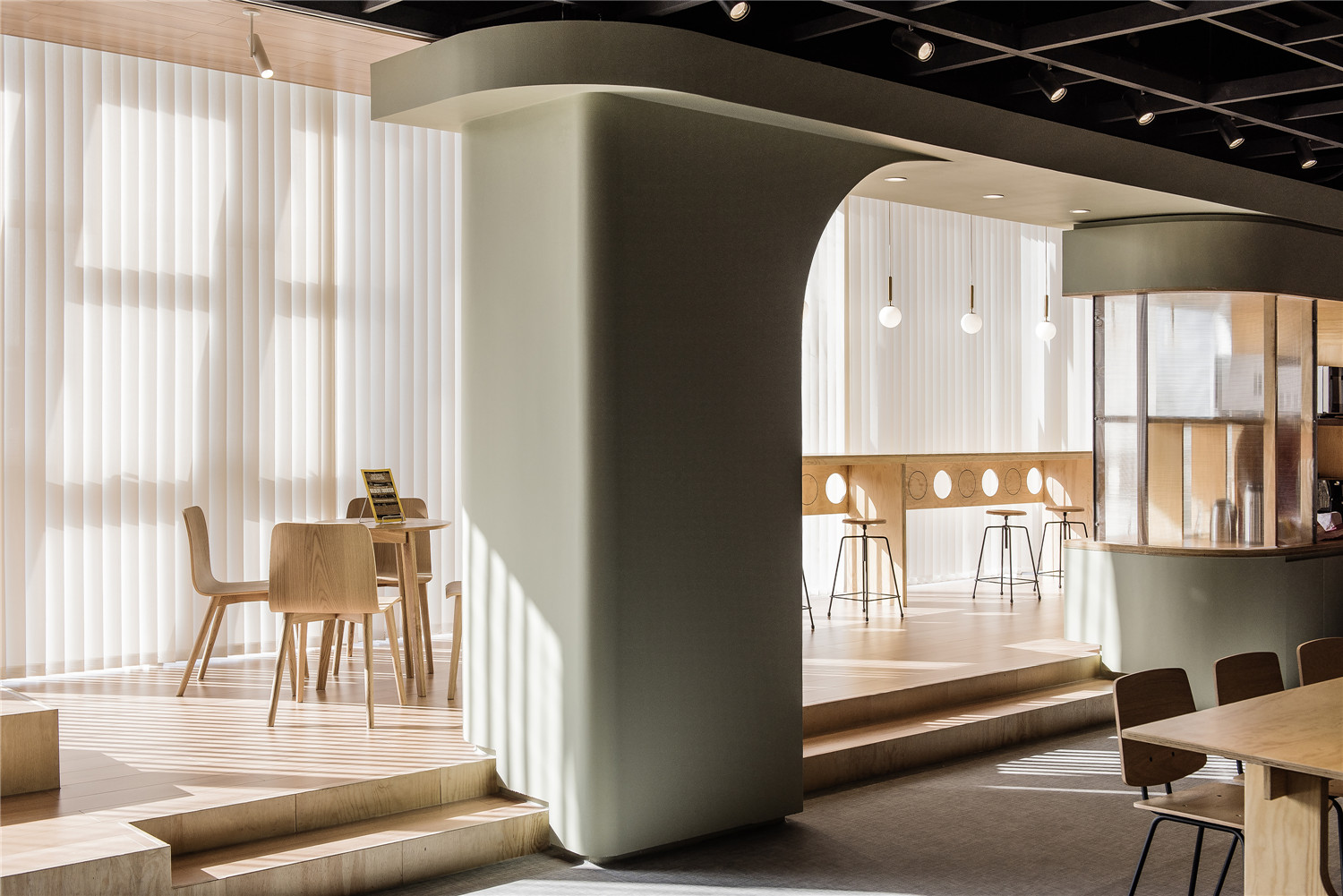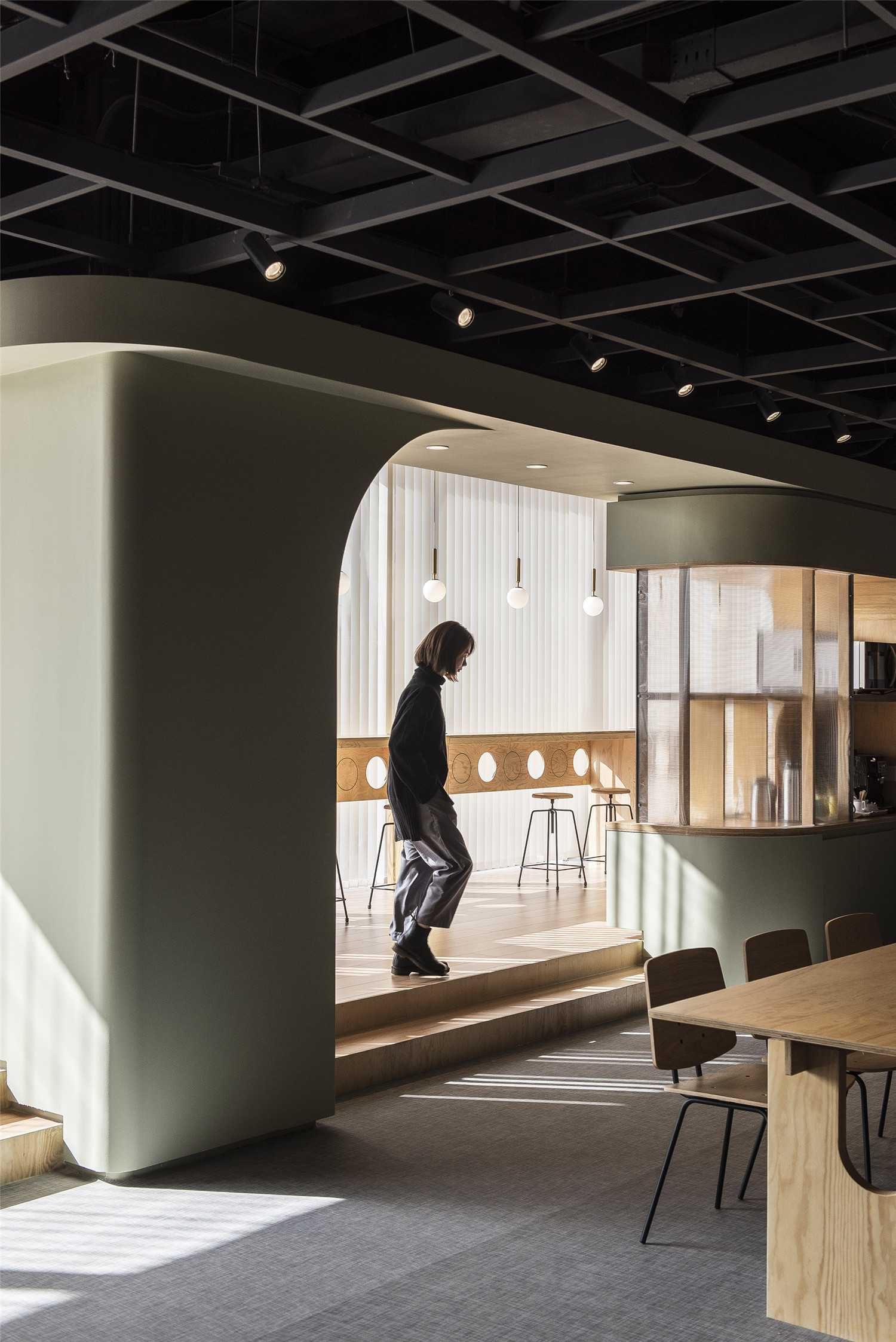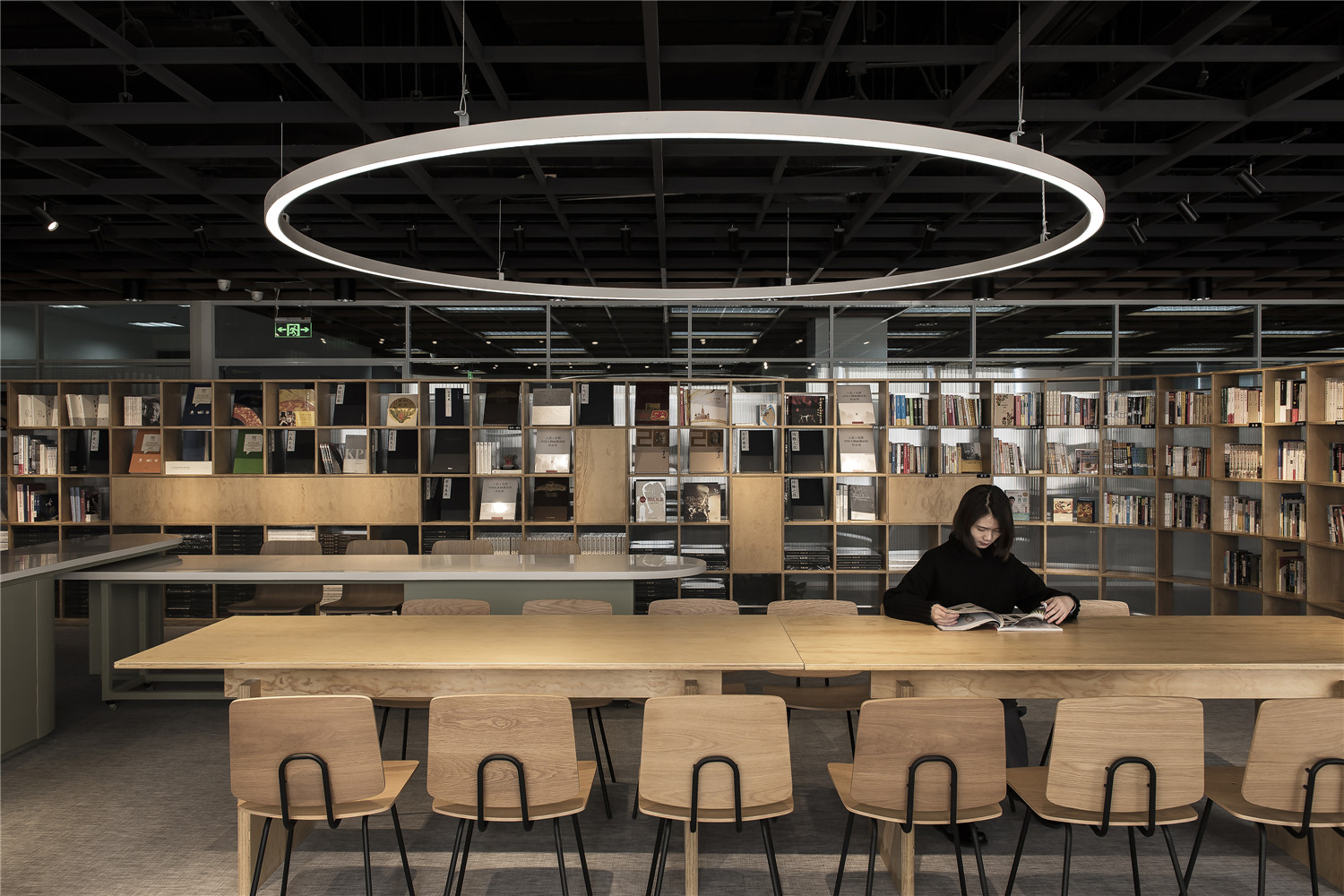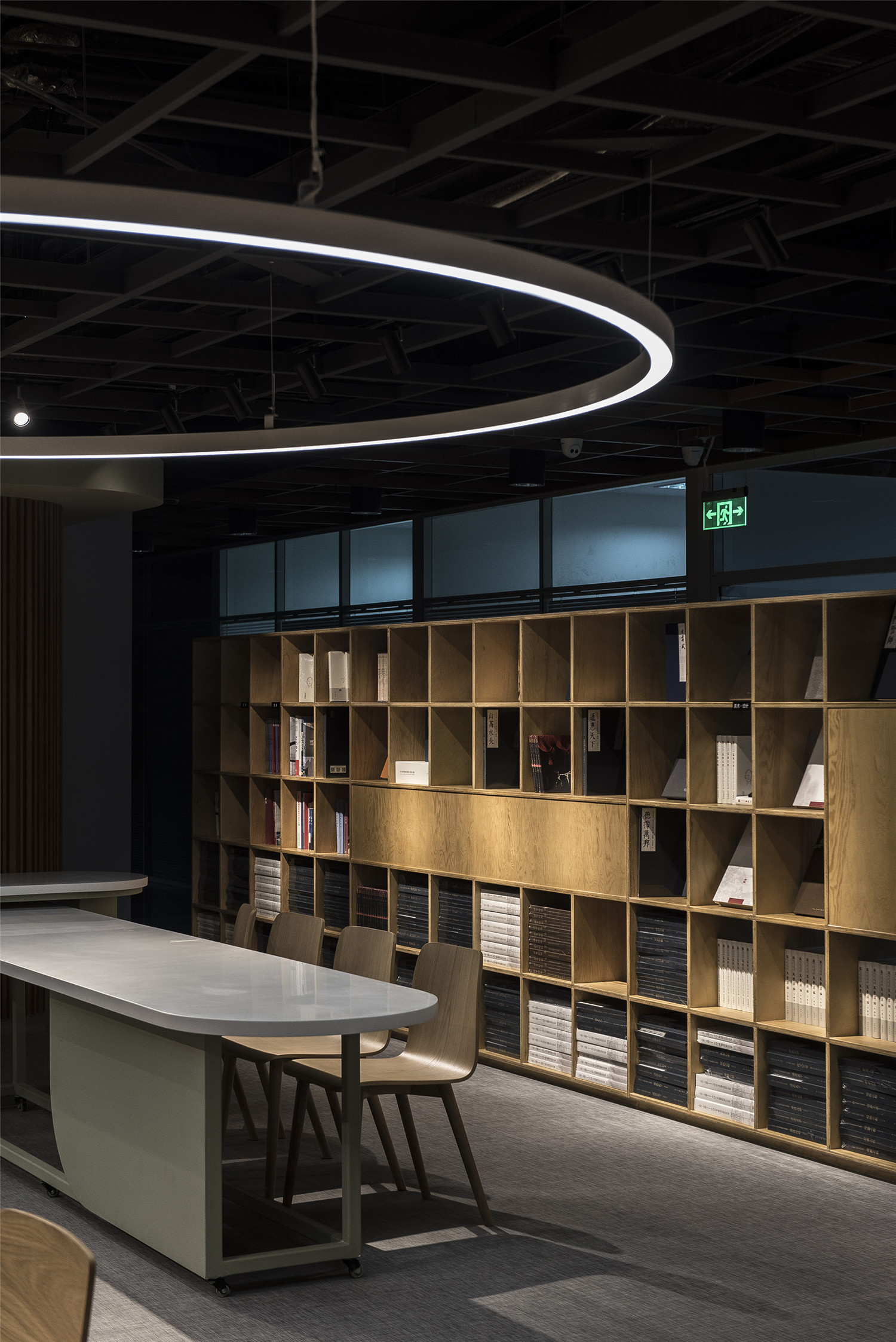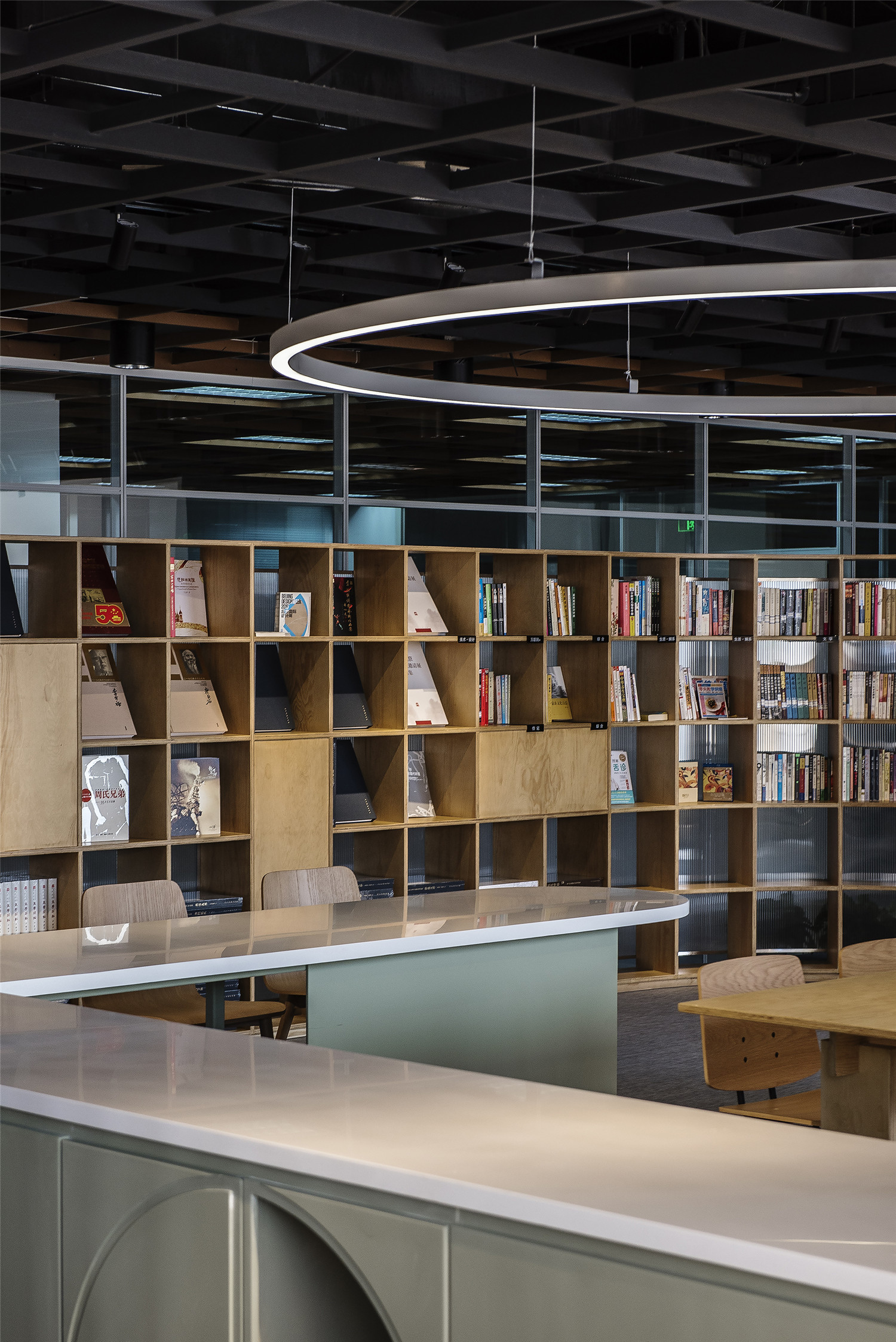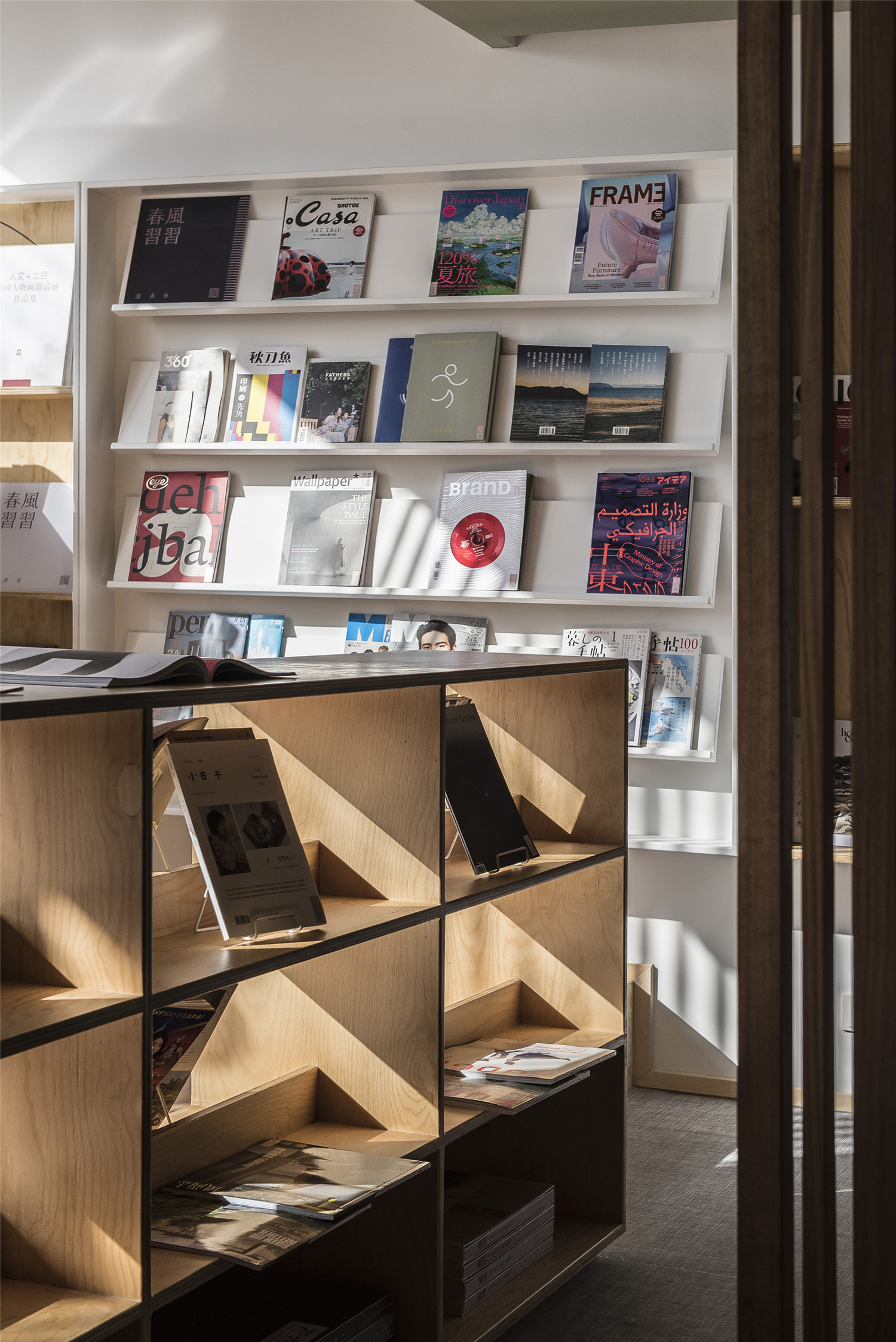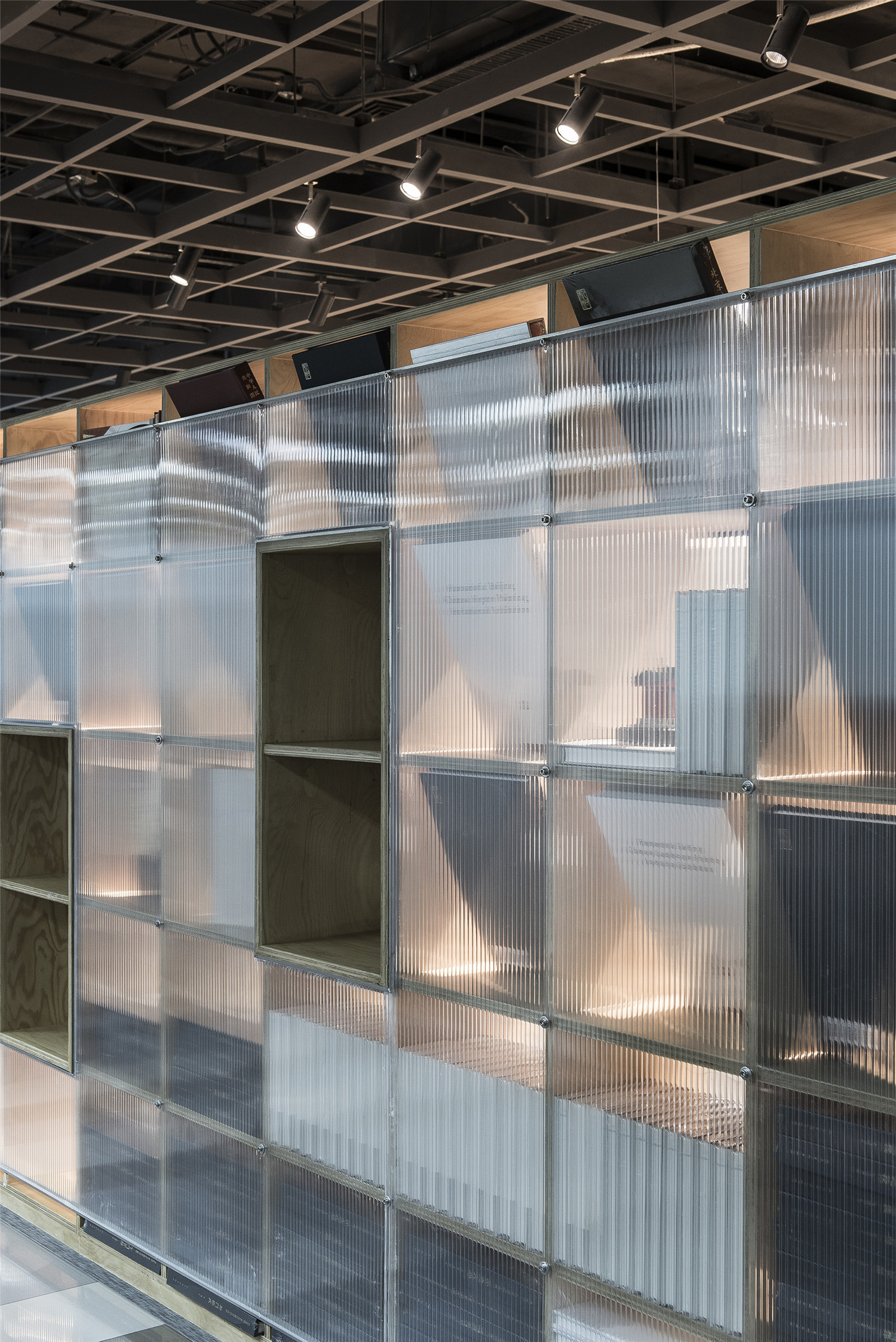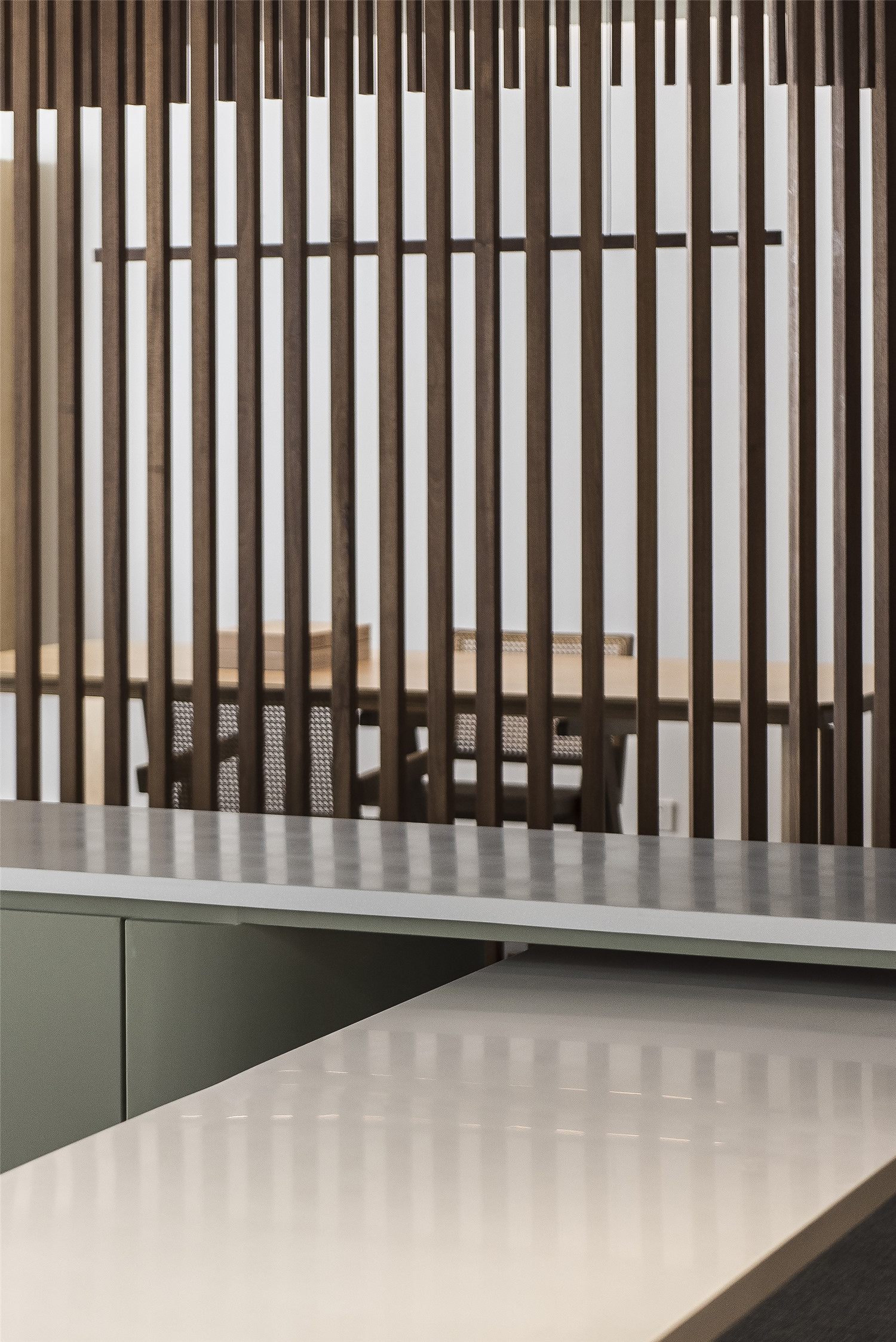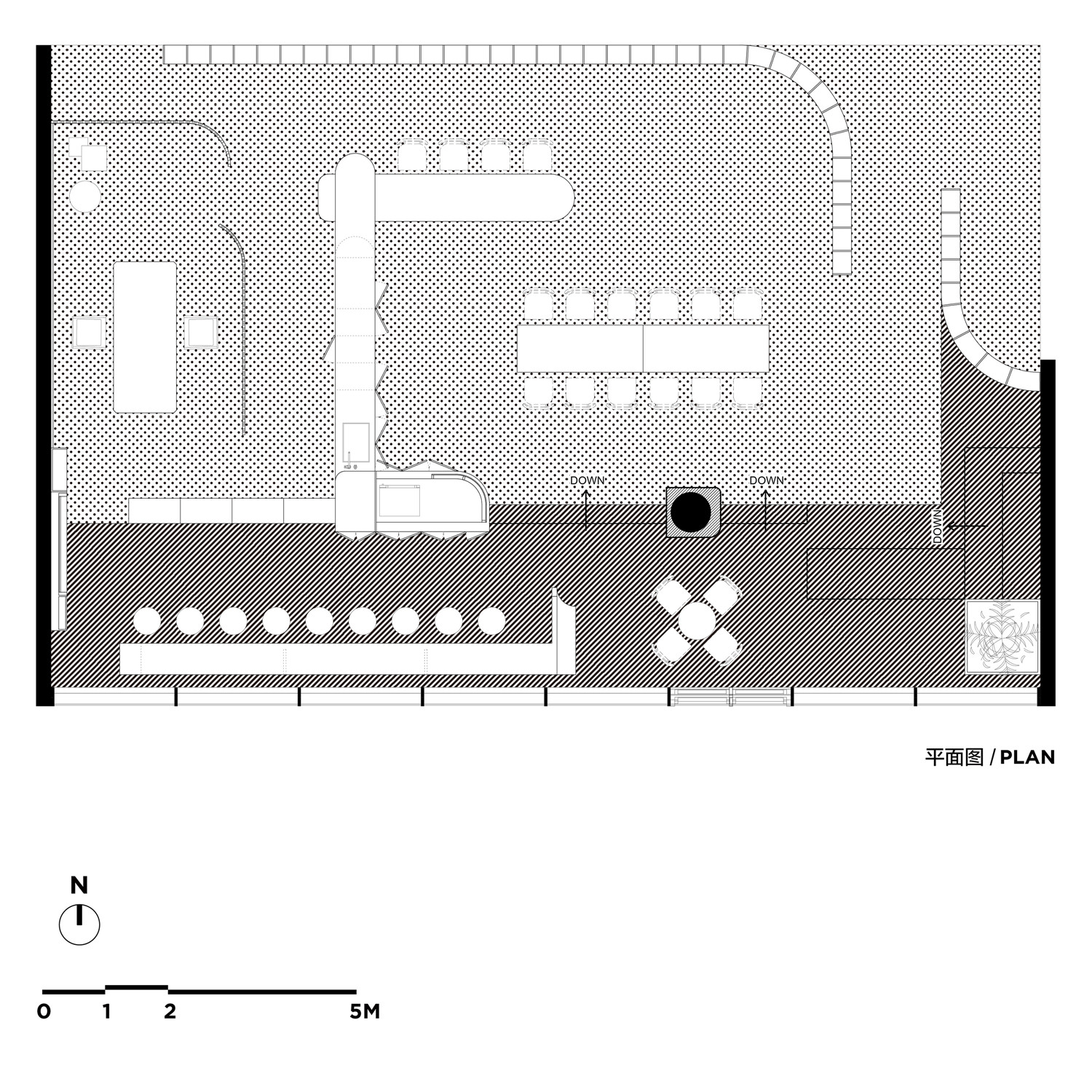长久以来,格子间已慢慢成为各个行业工作空间的一种常态,即便在开放办公盛行的时代,也有诸多大型企业采用这种场地资源效率最优化的形式去排列组合。这次改造项目的背景也是传统企业的办公地,所有的空间布局都围绕常规的功能展开,并未设置相对灵活的公共空间,这也同样建立起一层层边界。管理者希望通过空间微更新的尝试,让企业的工作人员在格子间的大基调下,有更多的自由放松的可能性。我们用阅读空间为基底的开放格局,配合以活动、茶饮等功能,营造一个大家可以共享的角落。
For a long time, the cubicle has been the most common working space in various industries, even in the era of open office, many large enterprises still adopt this efficient form of site resource optimization. The project site is in a traditional enterprise‘s office, the space layout was built by conventional functions without flexible public space, layers of limits were established. The company’s manager hopes that through the attempt of spatial micro renovation, the staff could have more freedom to relax under the premise of the cubicles. Therefore we try to use the reading space as the base, combined with other functions, to create an open corner that everyone can share.
▲改造前
进入集团办公大楼的流线和原本各功能的布置也算干净利落,所有的员工都在早已安排紧凑的环境内按部就班得忙碌着。改造区域的场地无论视野和自然采光都是整层的最佳位置,如此也让这座办公大楼里的阅读空间能和室外的细微变化发生紧密的联系。
The flow of entering the office building and oringinal function layout are clearly arranged, all the staff are busy working in this compact environment. The renovated area is the best place of entire floor, regardless of view or natural lighting, which also makes the reading space closely related to the subtle changes of outdoor environment.
▲模糊的边界
在考虑整体改造策略时,“边界”的概念尤为重要,无论实际的应用以及消防的硬性要求限制,一种模糊化的空间处理让这次更新变得轻盈可控。两组书架在前期设定的边界位置既充当与工作区的虚隔断作用,又承载主要的书籍展示功能。材料的配比上用双层阳光板和自然纹理的松木板组合使用,呈现质朴的张力。
When considering the overall design strategy, the concept of “boundary” is particularly important in terms of actual use or the requirements of fire protection, a fuzzy spatial treatment can make this project light and controllable. As the main book display area, two sets of bookshelves also serve as the virtual partition with working area, material is the combination of double-layered pet sheet and natural-textured pine board, which shows the rustic tension.
▲竖格栅和灰绿色体块
▲竖格栅围合的小空间
▲连续的空间组合
▲抬高部分穿插
▲抬高区域
▲大台阶阅读区
▲长吧桌阅读区
▲吧桌细节
设计初期就有个明确的寄望,想用一组温暖的灰绿色体块嵌入空间内,南侧的阳光和浅黄色木纹的肌理也穿插其中,生机盎然。因为保留了空间原有的方格吊顶,在包裹结构柱体以及组合柜时,通过一个新加的圆角顶面结构来连接竖向木格栅内的小书房。同样,各个功能之间也未设置明确的边界,进一步增加空间的开放程度。延落地玻璃窗的抬高部分延伸至书架区域,形成可落座的台阶。另一侧的长吧桌放置于最为明亮的区域,可安静得享受充裕阳光。春风习习杂志阅读区同样出现在阳光的末端,在墙体的书架中为喜欢新颖独立刊物的人们准备着定期更新的惊喜。
At the beginning of design, a warm gray-green volume was envisaged to be embedded in the space, with the texture of light yellow wood and the sunlight from the south side, for the scenario of vitality. Since keeping the original grid ceiling, a new rounded structure is used for connecting the small study room in the vertical wooden grille, when wrapping the structural pillar and the cabinet. Similarly, there is no clear boundary between different function areas, to further increase the openness of space. The sitting steps start from the raised part of the floor glass window to the bookshelf area, the long bar table on the other side is placed in the brightest area, where staff can enjoy the plenty of sunshine. The Spring Whispers Reading Zone also appears here, regularly updated surprises are prepared in the wall shelves for those who like novel and independent publications.
▲竖格栅外的入口
▲拱洞空间
▲自由排布的空间
▲家具与环形灯
前文提到的综合功能,考虑书架的设置和水吧紧密结合,我们设计了可移动的吧桌以及方便组合的长桌分隔交通流线,方便在不同功能场景下供使用者安排。所有的空间组织最终是为了营造新的秩序,一种从大空间进入小空间,小空间回到大空间,以及它们之间相互作用时带来适度的轻松节奏。灯光的配比和各个家具的视觉构成,也谨慎考虑到圆形或者弧线在此节奏中的重要作用。
By considering the combination of the bookshelf and drink bar, the multifunction area, with a movable bar table and another long table, separates the flows and is suitable for different functional uses. The spatial organization is ultimately to create a new order. For example, from a large space to a small one, or the opposite, and the interaction between them, all of these create a kind of moderate rhythm. The importance of circle and arc is also carefully considered in the lighting arrangement and the visual composition of individual furniture, to strengthen it.
▲杂志区域
▲书架细节
▲可移动桌面
当然,一个空间对人行为所带来的影响是有诸多未知的,原本格子间的场地如此置换一新后,期待在这里工作的人们能尽可能消解掉一些冗长的约束,在这个边界感变得模糊的阅读休憩角落有所发现,有所知。
Of course, a space brings many unknown impacts on human‘s behavior. After renovation of the original cubicle space, people who work here are looked forward to getting rid of some constraints, or discovering something new in this lightweight reading corner.
▲局部插图
▲轴侧图
▲平面图
▲立面图
项目信息——
项目名称:打开格子间_天街集团阅读空间设计
project name: Open the cubicles_ Tianjie Group reading space design
项目地址:北京东城区王府井街道
address: Sanlitun Street, Chaoyang District, Beijing, China
委托方:北京市天街集团
Client: Beijing Tianjie Group
读物提供:春风习习杂志图书馆
Book provider: Spring Whisper Magazine Library
设计单位:未来以北工作室
design company: Fon Studio
设计团队:金波安、李泓臻、罗霜华
designer: JinBoan, LiHongzhen, Luo Shuanghua
施工单位: 北京世纪鑫星装饰工程有限公司
设计时间: 2019.07-2019.09
period: 2019.07-2019.09
完工时间:2019.11
complete time:2019.11
项目面积:150平米
area:150 ㎡
摄影:未来以北工作室
photograph:Fon Studio
主要材料:阳光板、松木多层板、柚木、PVC编织地毯
main material:Pet sheet ,Pine composite board ,Teak,PVC woven carpet
主要品牌:九运地毯麦兰德漆
main brandJiuyun Carpet,Mylands Painting



